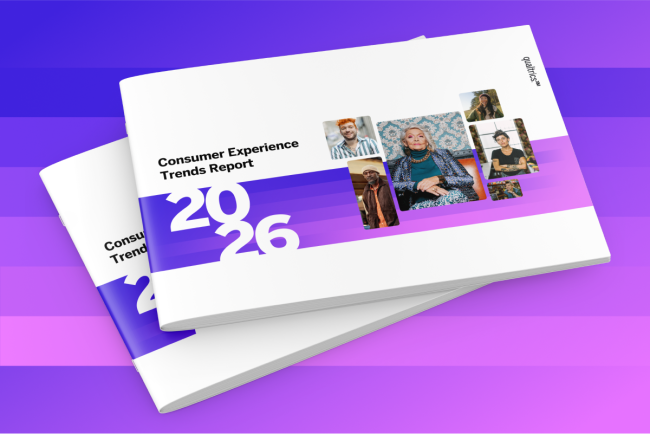Intro
The rise of e-commerce, social media, and mobile internet has added fuel to an already rapidly changing environment where experience trumps price and product. This shift is being driven by a need for experimentation, technology that makes it easier to switch, and a sense of FOMO amplified by social media.
To highlight the problems faced by brands, 61% of people say ‘brand relationships’ are no longer a key factor in their purchase decisions. What’s more, two-thirds of consumers prefer to choose their own journey through a brand’s channels to complete a task. Navigating this landscape is no easy task.
Despite the rapidly changing environment, one constant remains. Customers demand and value human interaction. After all, experience is all about the impact on the individual.
Even with the plethora of digital engagement platforms available today, brands still have the ability to humanize their CX. And those who successfully humanize their customer experience - such as American Express, Cathay Pacific, and Allianz - will thrive in the experience economy.
Here are some top tips that will help you humanize your CX through digital to increase market share and business performance among your competitors:
Understand humans
Let’s be honest, we are a complex species. Our thought-patterns and decision making are not always easy to understand, and sometimes they’re not rational. There are, however, universal characteristics we all share. The Qualtrics XM Institute calls these the Six Key Traits of Human Beings - we are intuitive, self-centered, emotional, motivated, social, and hopeful.
Keeping the Six Key Traits of Human Beings front of mind when designing your digital CX program help you act with purpose, create memories, and cultivate deep empathy.
Build detailed profiles
Bring together experience data (X-data) and operational data (O-data) to humanize your CX by taking the understanding of what your customers want to the next level.
For example, behavioral patterns (X-data) that suggest a customer is opening your app for support rather than to purchase items allows you to rapidly meet their needs using in-platform pop-ups. Alternatively, geolocation and time of day (O-data) helps you serve tailored and relevant content. Both approaches reduce friction to create a seamless and superior CX.
Personalize the experience
Whether you like it or not, consumers choose their own path through your digital channels. And the majority will often use more than one. You need to understand the key moments in each journey to humanize engagements and be able to delight regardless of the platform chosen.
Delivering a personalized experience is another area where the integration of X-data and O-data has a critical role. It empowers you to see - at an individual and customer segment level - how your customers behaved during the engagement and the drivers behind this. For example, if you can understand why a cart was abandoned - such as a faulty link or poor user experience - you can take meaningful action resolving the issue and limiting the volume of lost sales.
This ability to understand the how and why of customer behavior using the Qualtrics XM Platform is a powerful tool for brands looking to take action that humanizes their CX.
Have conversations
Customers want a 1:1 approach, and you can extend this to all digital platforms by embracing new technologies, such as AI-powered chatbots. Facilitating conversations helps you humanize the experience to better guide customers through the journey. It also allows you to escalate or direct questions or concerns to the individuals or teams best suited to help as they arise. Interacting with your brand becomes more conversational, creating more of an emotional and human connection.
To optimize your investments in these technologies, it's a huge advantage to already have a deep understanding of your customers and how they prefer to engage with your brand. It helps identify common pain points and queries, ensuring the technology is prepared to perform in the key moments.
Be fast and efficient
Customers are demanding. And in the digital age they’re probably more demanding than ever before, expecting rapid experiences. Integrating X-data and O-data to power your new digital technologies will help you deliver faster, more effective CX through digital. To give an example, using sentiment analysis tools you can quickly and effectively respond to negative online reviews to turn a potentially negative CX into a positive.
Digital platforms have changed CX forever. New platforms and innovations will consistently come to market, changing customer expectations and capabilities. Throughout the change however, consumers will value the human touch. And they’ll reward brands able to get it right.
Bringing together X-data and O-data enables brands to unlock and act on the insights they need to create a personal, tailored, and unique CX that spans platforms and geographies.



